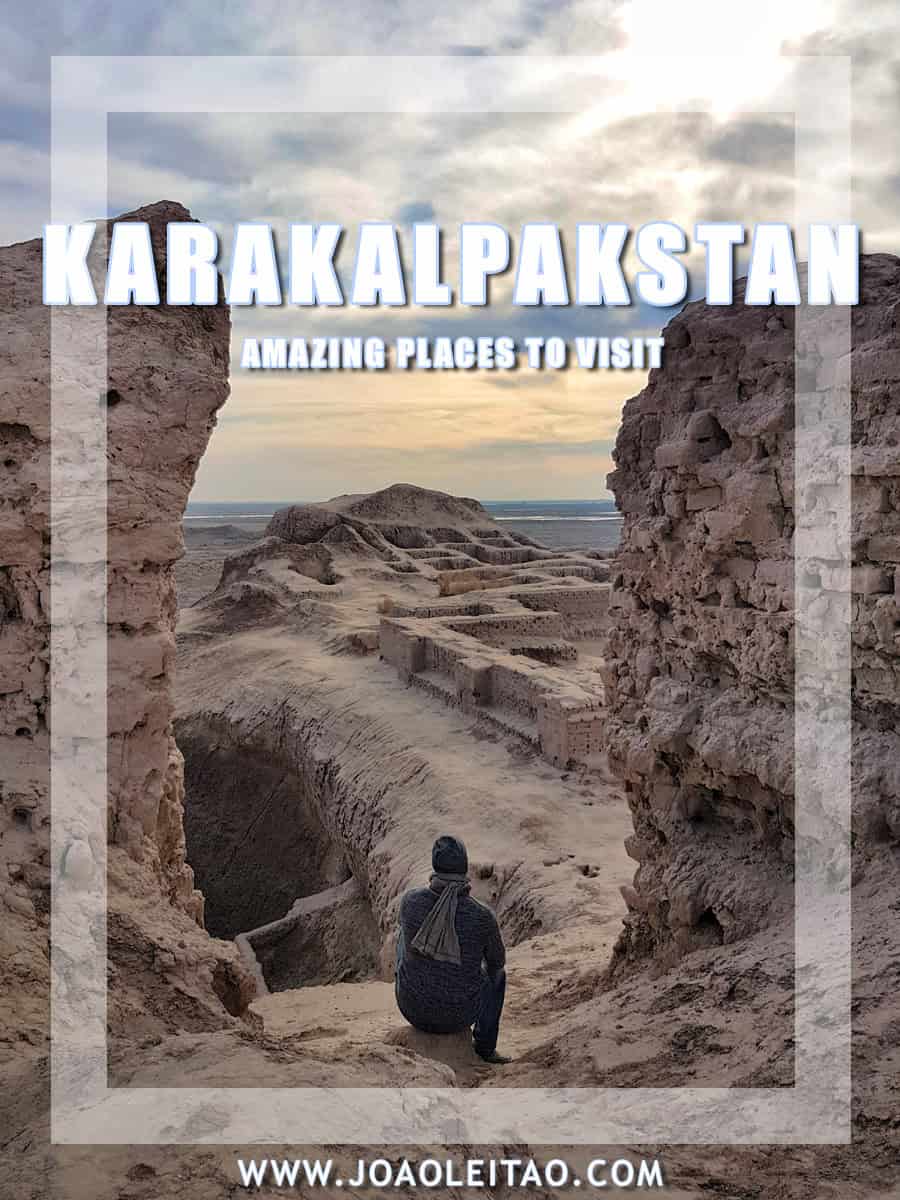Table of Contents
Visit Karakalpakstan
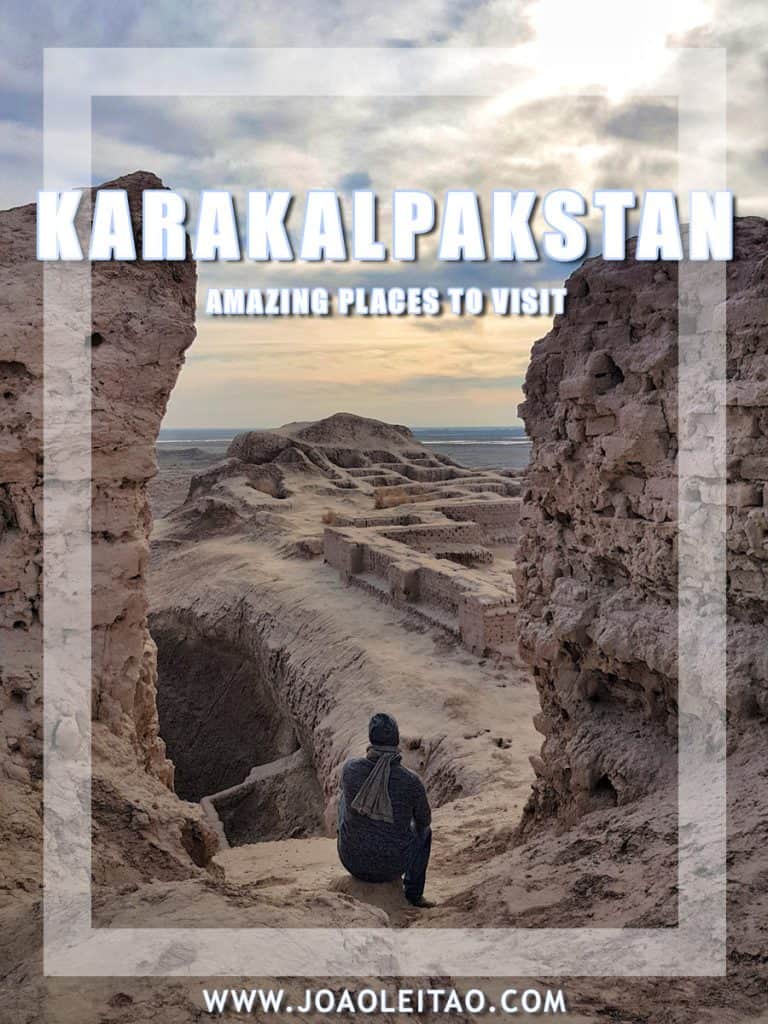
Have you ever heard about the Republic of Karakalpakstan? No? Well, don’t worry, because most people don’t know about the existence of this autonomous republic in the northwest region of Uzbekistan.
Yes, Karakalpakstan is in Uzbekistan.
Truth said, most people don’t know much about Uzbekistan either.
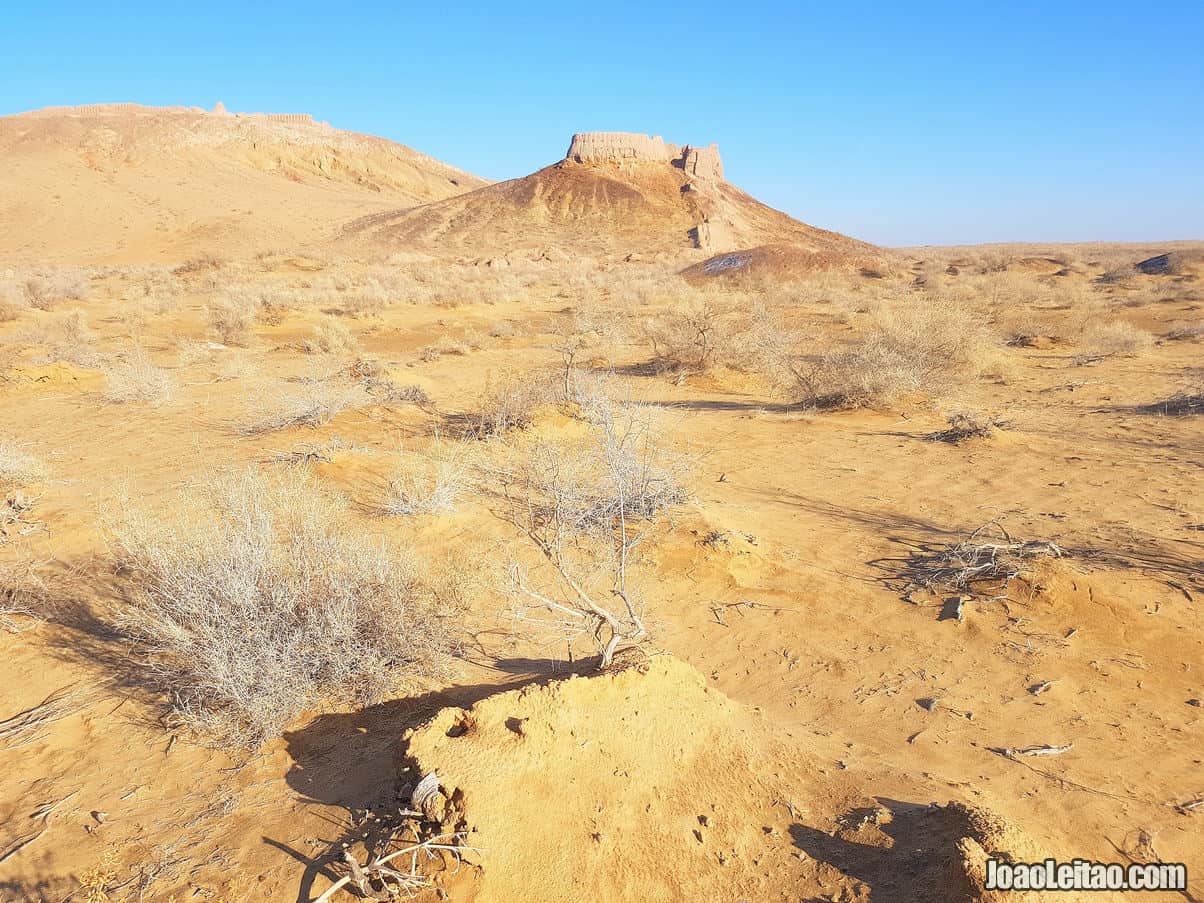
I entered Uzbekistan five times, and on this page, I will focus on this desert region full of beautiful places to visit. For those who know me, I have a natural connection to deserted places. I like sand, dust, and emptiness.
Karakalpakstan
Curiosities about Karakalpakstan
- Capital and largest city is Nukus
- Official languages are Karakalpak and Uzbek
- Total area of 164,900 km2 (63,700 sq mi)
- Karakalpak people used to be nomadic herders and fishermen
- The Khanate of Khiva gave Karakalpak to the Russian Empire in 1873
- After the drainage of the Aral Sea, Karakalpakstan is now mostly desert
- The Kyzyl Kum desert is located in the east
- The Kara Kum desert is located in the south
- Karakalpakstan economy used to be heavily dependent on fisheries in the Aral Sea
- The Aral Sea was one of the four largest lakes in the world
My two visits to Karakalpakstan
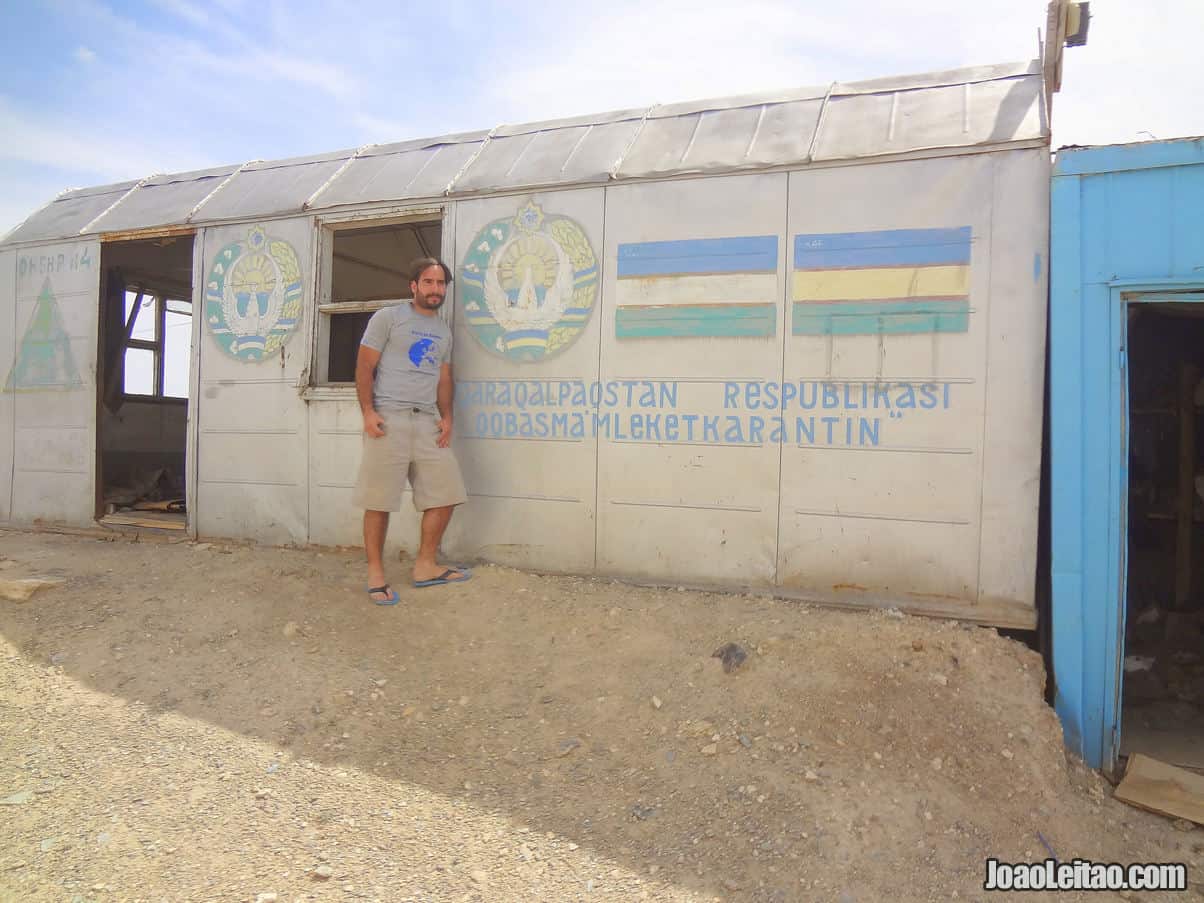
First time in Karakalpakstan: July 2012
Second time in Karakalpakstan: December 2017 / January 2018
We can’t properly talk about Karakalpakstan without mentioning two of the most important touristic sites in the region: the Desert Castles of Ancient Khorezm; and the ship cemetery on the bottom of the dried-up Aral Sea in Muynak. If you want to visit Karakalpakstan you have to understand that the region is very big, and travel distances are enormous.
During my first visit to Karakalpakstan, I didn’t visit the desert castles, because I made Muynak one of my travel priorities. During my second visit to Karakalpakstan, I once again visited Muynak but made the fabulous desert castles the priority of my trip in northern Uzbekistan. I was not deceived and indeed these desert fortresses were the highlights of my fifth visit to the country.
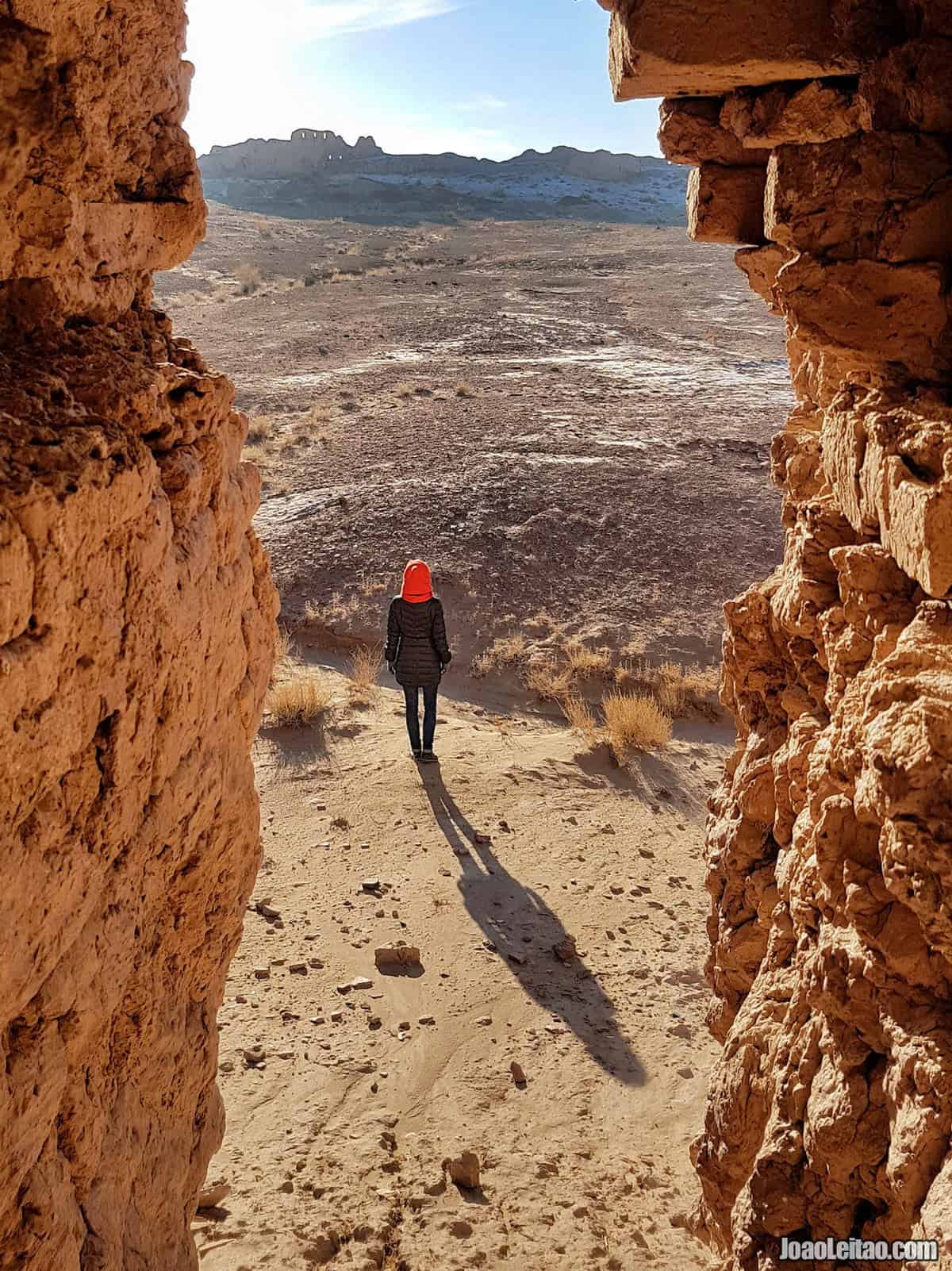
2000 years ago, there used to exist more than four hundred desert castles. Today around seventy still exist, but only about a dozen of them are actually worth to visit since the others are very deteriorated.
The Desert Castles of Ancient Khorezm are on the tentative list of UNESCO to become World Heritage Sites. The most important desert castles are: Toprak Qala, Ayaz Qala, Koy-Kirilgan Qala, Big Guldursun fortress, Pil Qala, Anka Qala, Kurgashin Qala and Djanbas Qala.
What to Visit in Karakalpakstan
1- Nukus
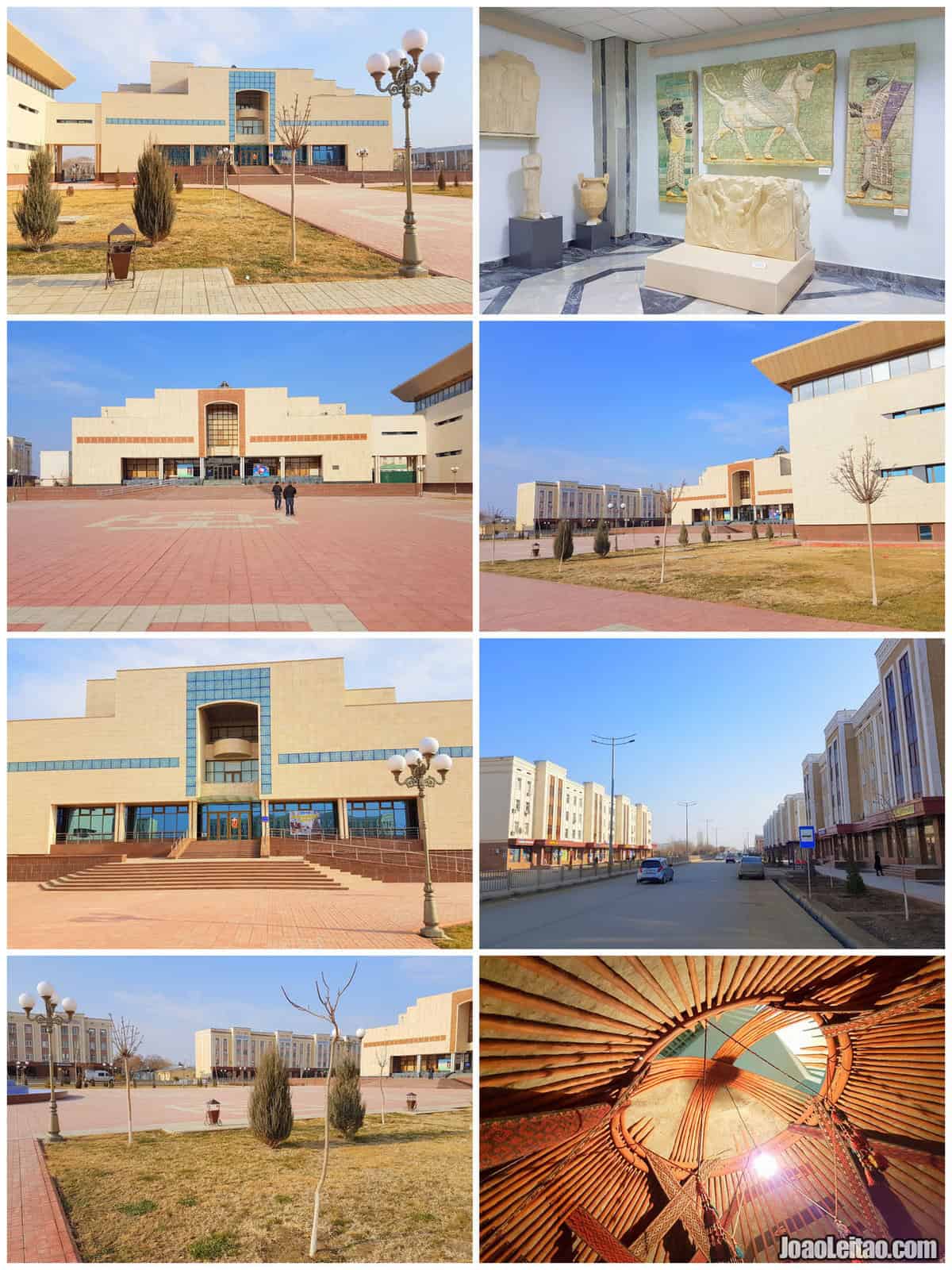
Nukus is the capital of the Republic of Karakalpakstan. Big desert city, with big avenues, new buildings and an interesting art museum holding an amazing art collection. Nukus is 200 km distance from famous Khiva in Xorazm Region.
What to visit in Nukus:
- Karakalpakstan State Museum of Art
- Museum of Applied Arts
- Karakalpak State Museum
- Istiqlol Garden
- Central market
- Government Square
- Berdakh Museum
2- Guldursun Kala
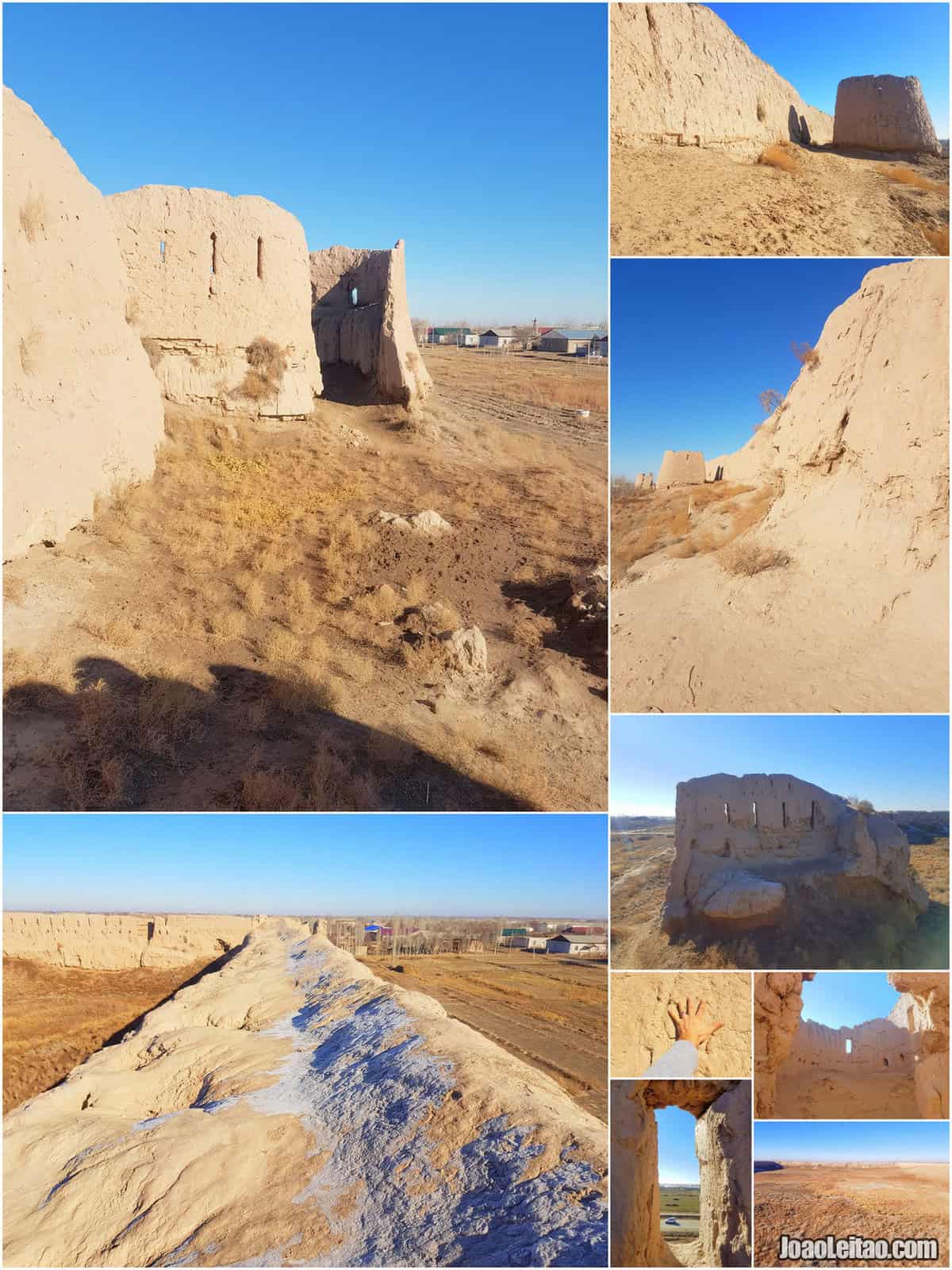
Guldursun Kala was the first of the desert castles that I visited. Interestingly, this huge structure is located just aside a village, so, from the top of the castle towers, you can appreciate the nice views of the local community. Guldursun Kala was built in the 12th century but soon destroyed by the Mongols in 1221.
What to do in Guldursun Kala:
- Go around the castle on the outside
- Climb the towers
- Explore the empty interior
GPS coordinates: Gu’ldu’rsin qala 41º 41.590 60º 58.890
3- Koi Krylgan Kala
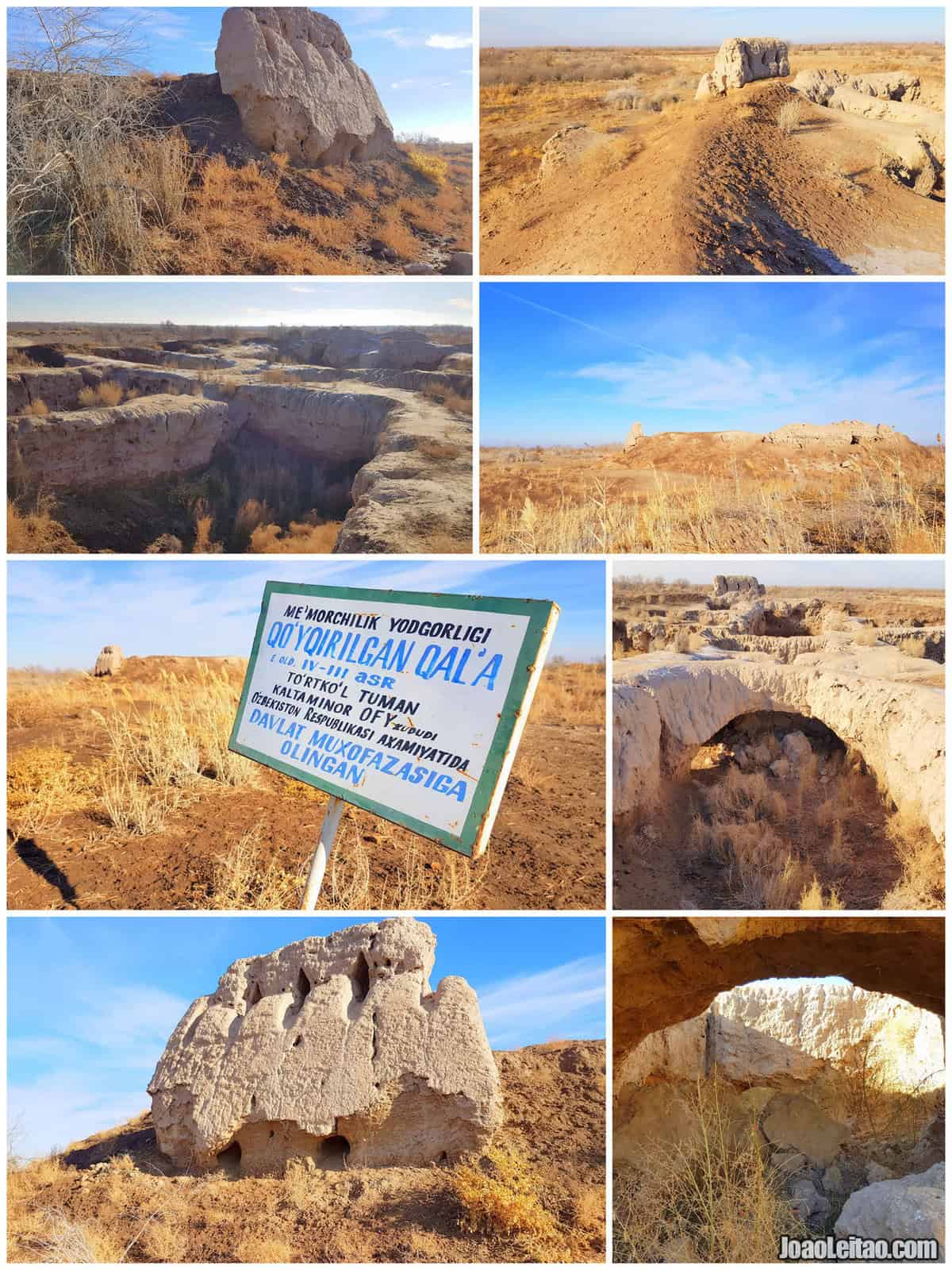
Near Taza-Kel’timinar village we can visit a peculiar ancient site. Koi Krylgan Kala was built around 400 BC and it is actually not a castle, but a Zoroastrian Temple. Zoroastrianism, created in Persia (ancient Iran), is one of the world’s oldest monotheistic religions.
■ Also read: Sacred and Religious Places to visit in Iran. Enjoy!
Koi Krylgan Kala is an impressive site, mainly because it is rounded. Don’t be fooled to think that this is a small temple. The majority of its structure is in fact buried under the ground for protection. When the temple was excavated, the whole complex was dug and we could appreciate its magnificent and impressive full composition. Google Koi Krylgan Kala and you will be impressed with how the ruins look like.
What to do in Koi Krylgan Kala:
- Go around the castle on the outside
- Climb the walls
- Explore the empty interior under the arches of the main temple
GPS coordinates: Qoy Qırılg’an qala 41º 45.317 61º 7.020
4- Janbas Kala
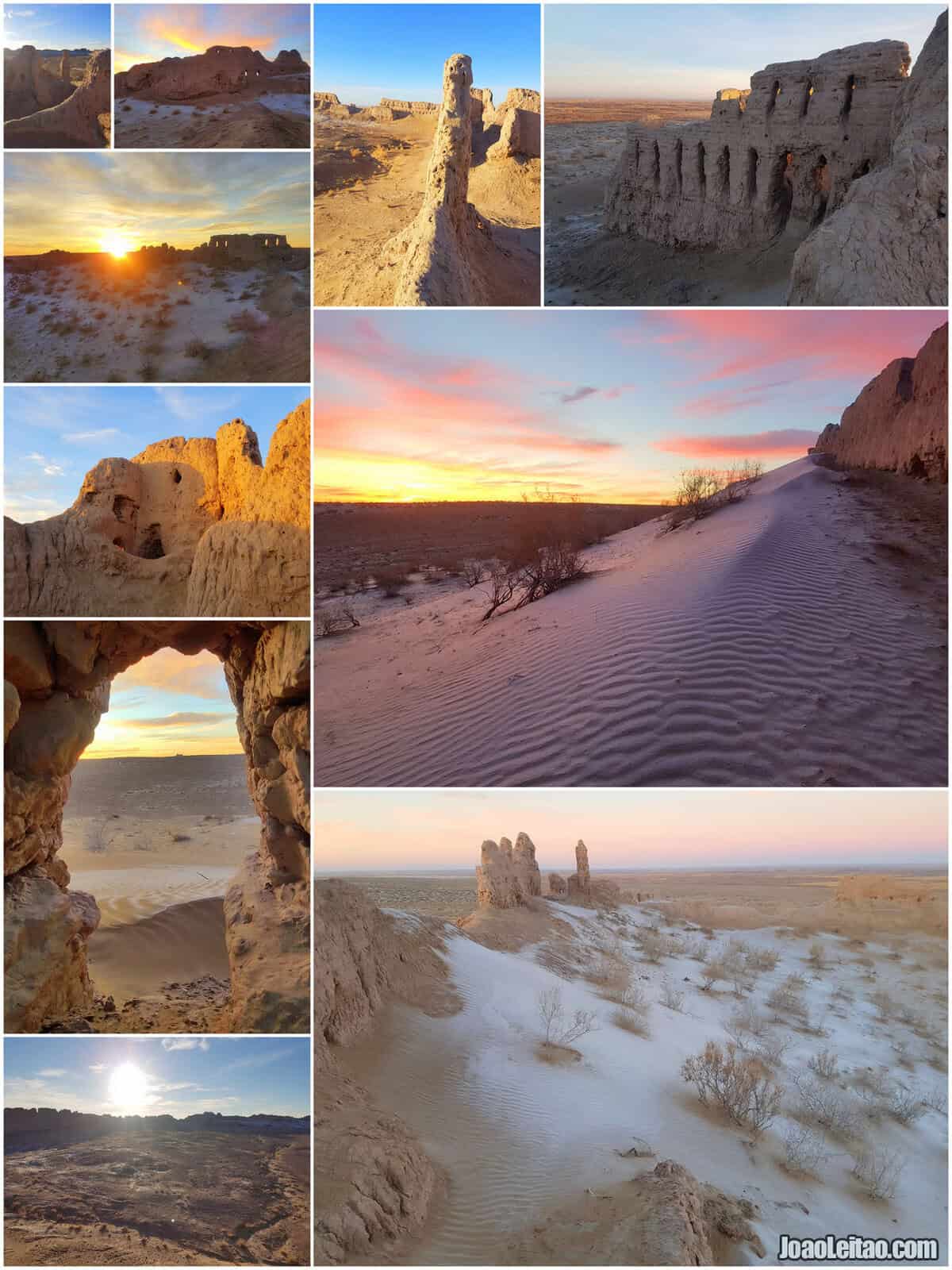
Janbas Kala was one of my favorite desert castles. Its charming state of preservation, along with its huge 20 meters high decorated walls create an impressive site. Janbas qala is, in fact, one of the earliest desert fortresses of Khorezm, dating back to the 4th century BC. I spend the night in this castle and had the chance of having a beautiful sunrise while exploring the complex.
GPS coordinates: Janbas qala 41º 51.480 61º 18.245
5- Qirq Qiz Kalas
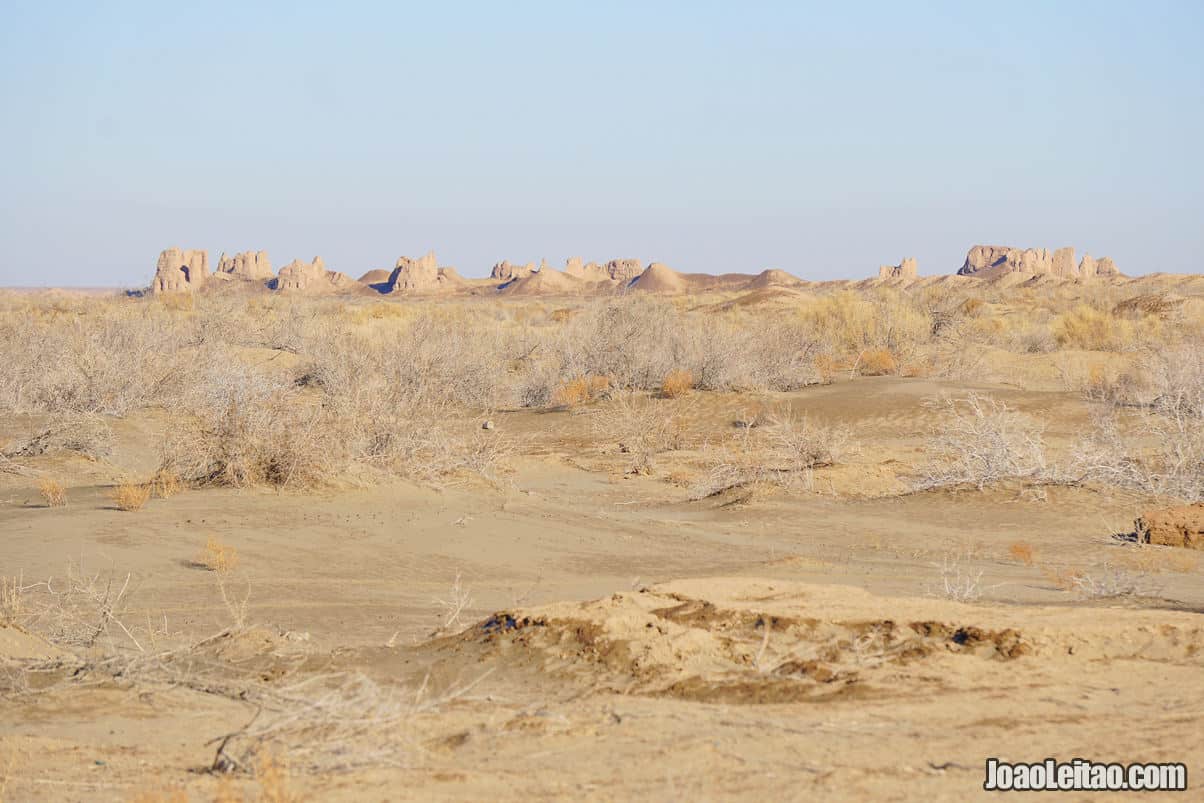
Qirq Qiz refers to two different castles, Big Qirq Qiz Kala and small Qirq Qiz Kala. These two places are located not far from Kizil Kala castles, in the middle of the Kyzyl Kum desert. Both are a bit destroyed, yet you can notice some wall decorations and make some interesting pictures along its crumbling walls. Qirq Qiz Kalas date back from the 4th and 3rd centuries BC.
GPS coordinates: Big Qırq Qız qala: 42º 0.450 61º 9.470 – Little Qırq Qız qala 42º 1.090 61º 6.075
6- Ayaz Kalas
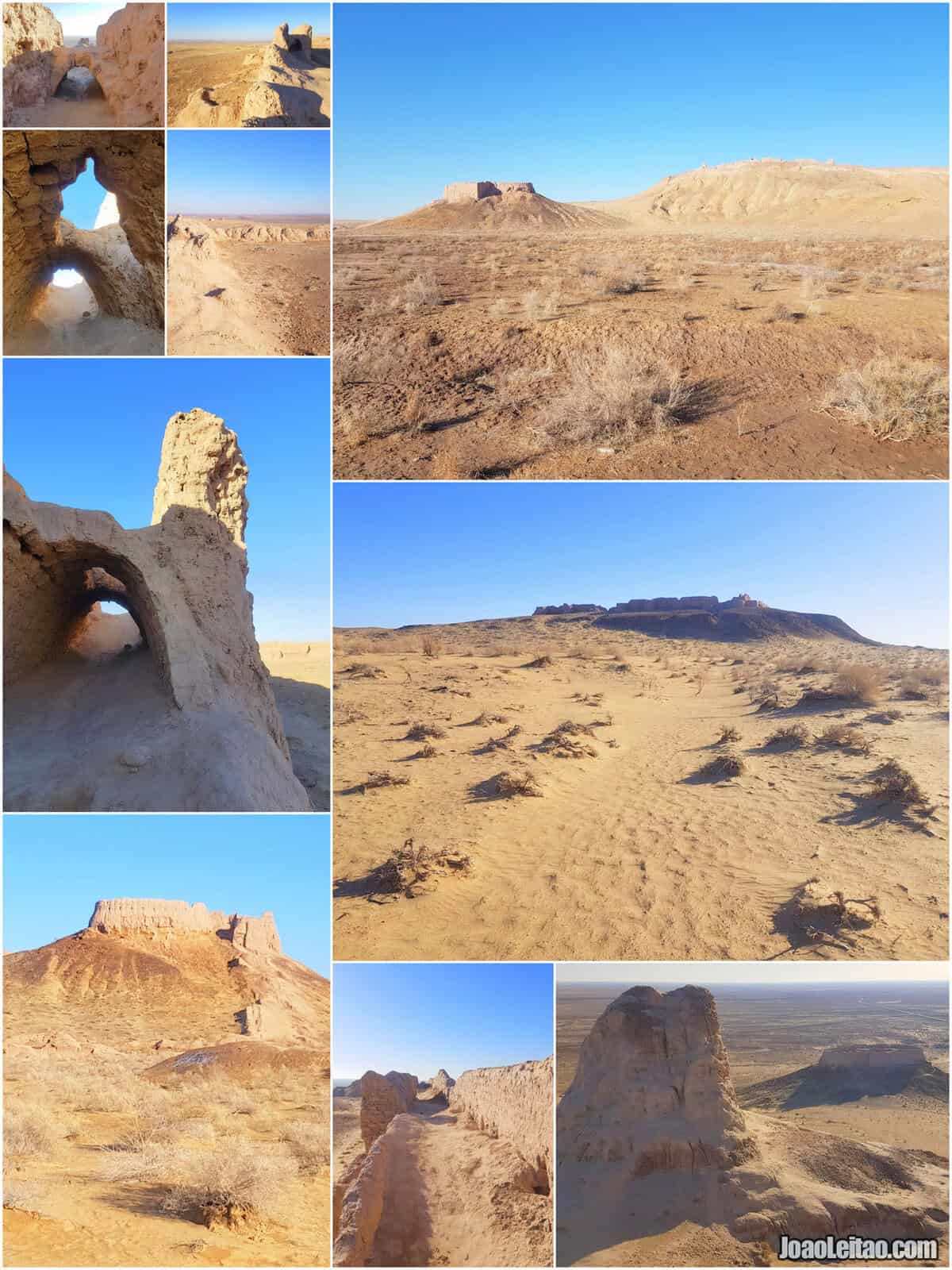
Spectacular desert fortresses, the three castles of Ayaz Kalas are along with Tuprak kala, my favorite castles in Karakalpakstan. The buildings date from different times: Ayaz qala 1 dates from the 4th century BC, located on the top of the hill. Ayaz qala 2 dates from the 8th century AD, and Ayaz qala 3 dates from the 2nd centuries AD.
GPS coordinates: Ayaz qala 1, 42º 0.854 61º 1.746 – Ayaz qala 2, 42º 0.654 61º 1.630 – Ayaz qala 3, 42º 0.320 61º 1.830
7- Toprak Kala
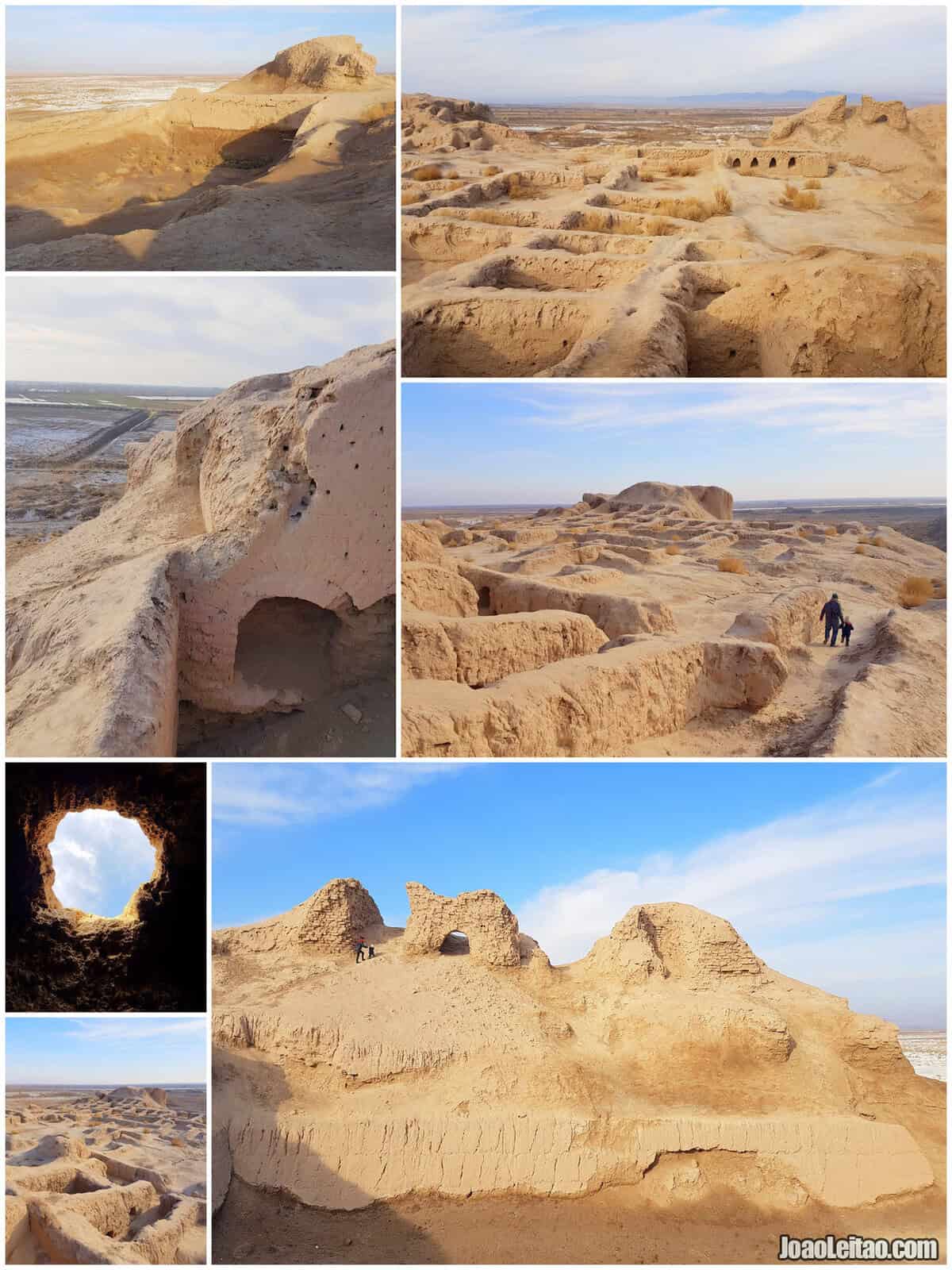
Toprak Kala is one of the most visited and one of the most spectacular of the Desert Castles of Ancient Khorezm. The whole complex is impressive, and the views from the top of the ruined towers are just breathtaking.
What to do in Toprak Kala:
- Go around the castle on the outside
- Climb the walls
- Climb the towers
- Explore the empty interior under the arches and main structure
- High Palace complex
- Palace-Temple complex
- Topraq qala City
GPS coordinates: Toprak Qala High Palace complex 41º 55.715 60º 49.250 – Toprak Qala Palace Temple complex 41º 55.820 60º 49.170
8- Kizil Kala
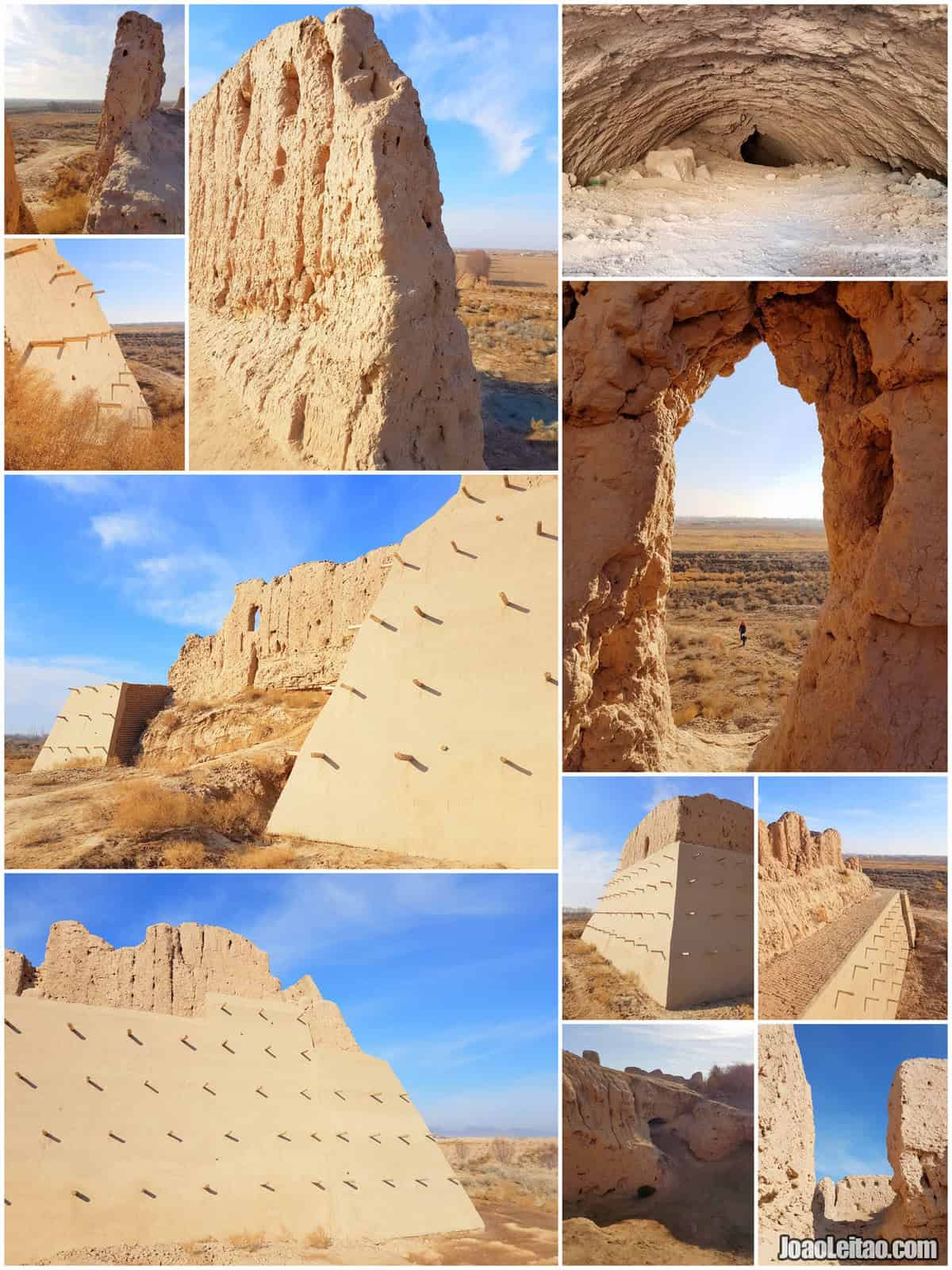
Kizil Kala is a very well preserved square castle located near Kartaube village. Kizil Kala was built in the 2nd century AD and is one of the few desert castles to have been rebuilt and restored by the Uzbekistan state. The walls are very high, and we can almost crawl inside the inner rooms of this ancient place.
GPS coordinates: Qızıl qala 41º 55.807 60º 47.050
9- Sultan Uvays Bobo Mausoleum
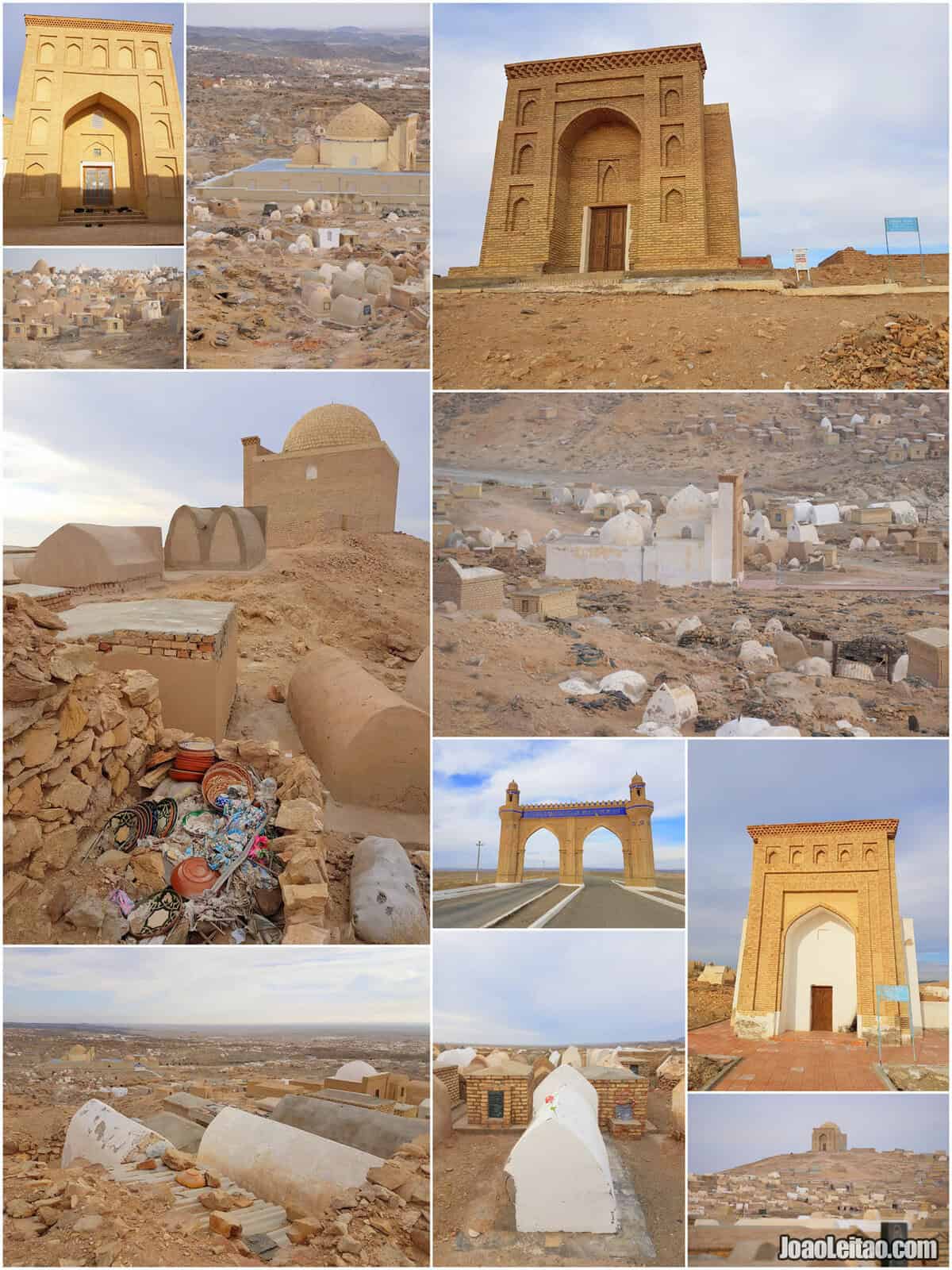
I love surprises while traveling. Discovering places not mentioned on guidebooks and roadmaps tend to activate my inner explorer’s soul and get all excited about finding new sites. After visiting Toprak Kala and Kizil Kala, and on my way to Nukus, I noticed an unusual city on the horizon and a big gate leading somewhere I didn’t know what it was. I drove to the parking lot and start exploring. For my surprise, I was in the middle of a significant Sufi pilgrimage site and inside one of the biggest necropolis of Central Asia. An authentic “City of the Dead” like the one in Najaf-Iraq and Cairo-Egypt. While exploring you will notice very ancient tombs mixed with new ones.
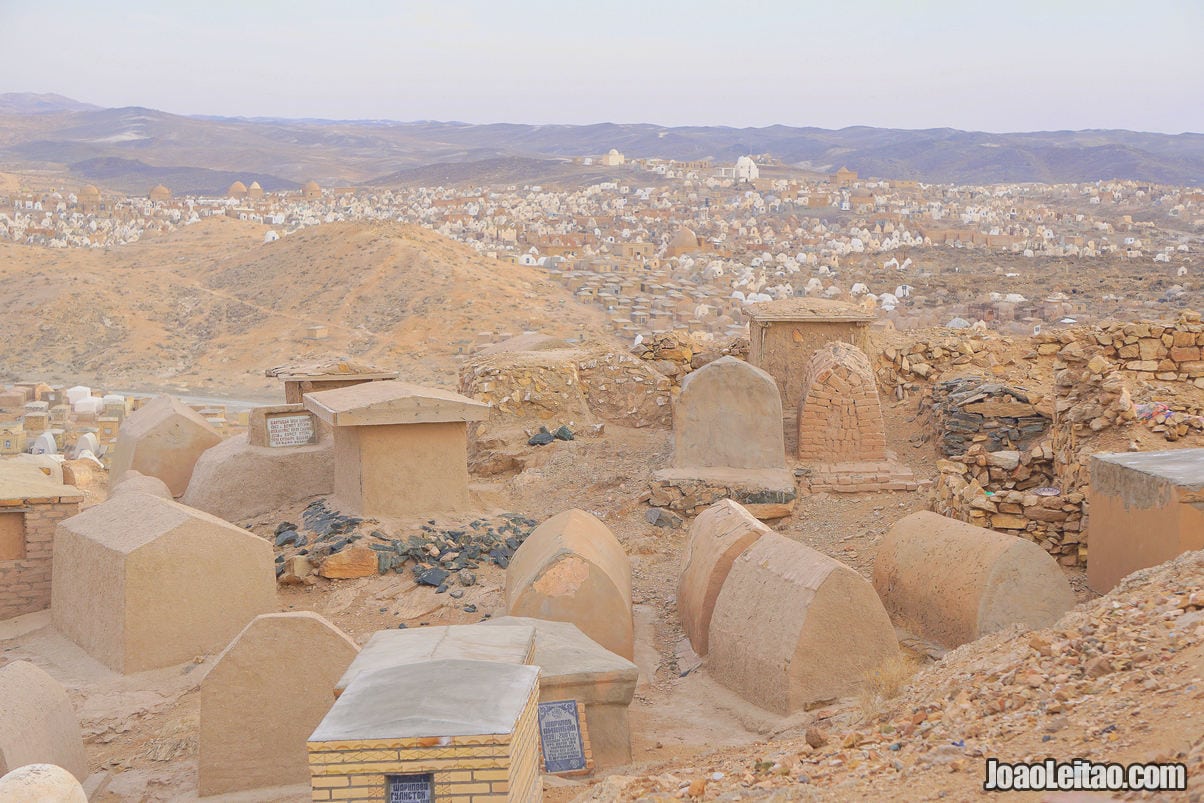
What to do in Sultan Uvays complex:
- Explore the ancient graves and cemetery
- Go inside the Sultan Uvays Bobo Mausoleum and sit down for a prayer
- Short climb up to a holy site, containing the foot and knee prints of the Sultan
- Explore the empty interior under the arches and main structure
- 10th century mausoleums
10- Chilpyk Tower of Silence
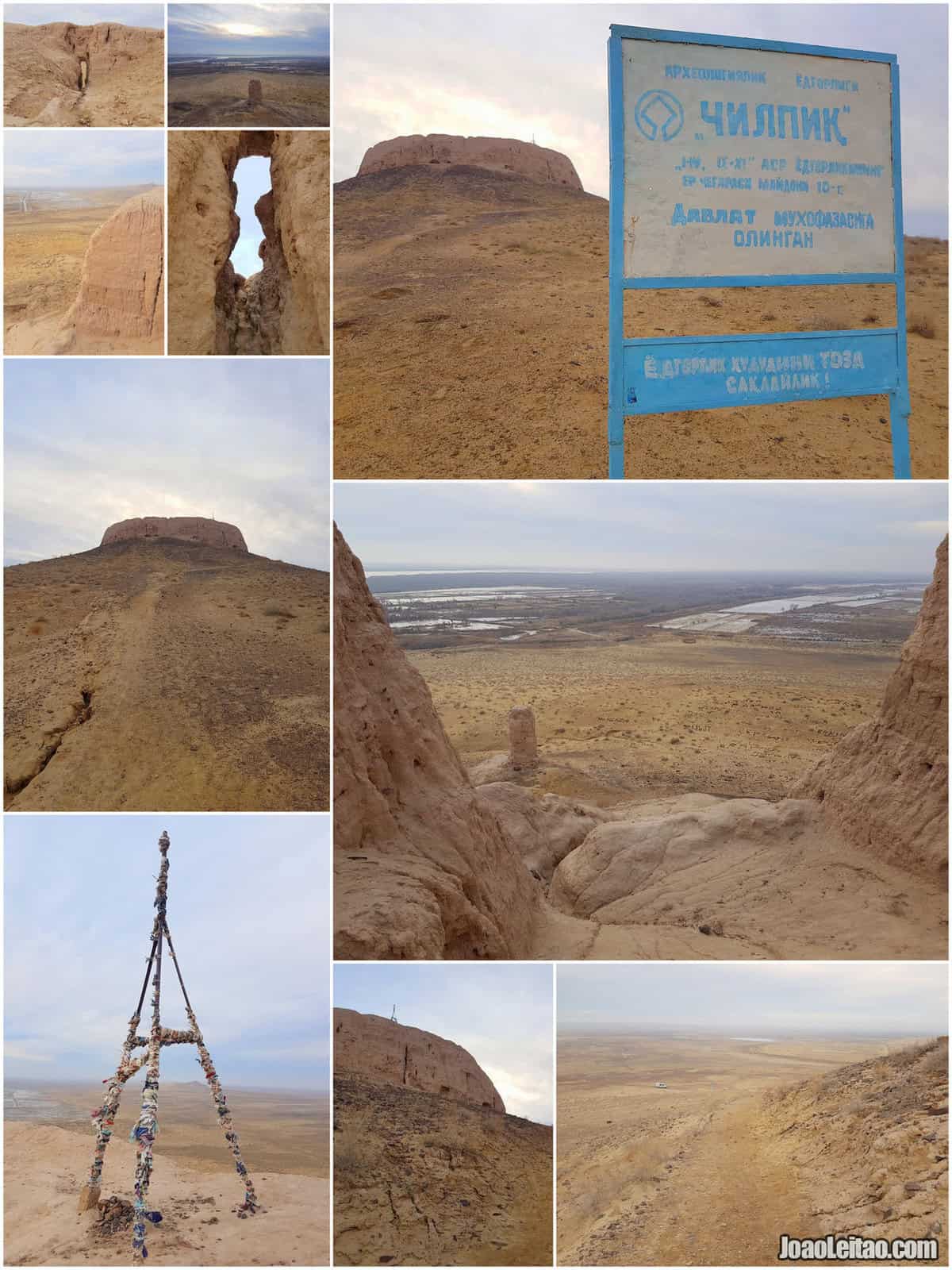
Who would say that in Uzkekistan we would find a very well preserved Tower of Silence? Located on the right bank of the Amu Darya river, Chilpyk is an impressive dakhma, aka tower of silence from the ancient Zoroastrian religion. Dating back to the 1st century BC, this is one of the most important sites of the autonomous republic, and the emblem of Karakalpakstan even depicts the sun rising over Chilpyk. How Interesting!
What to do in Chilpyk:
- Go around the dakhma on the outside
- Climb up
- Beautiful sunset over the fertil shores of the Amu Darya river
- From above, notice the names written with rocks on the field
11- Gyaur Kala
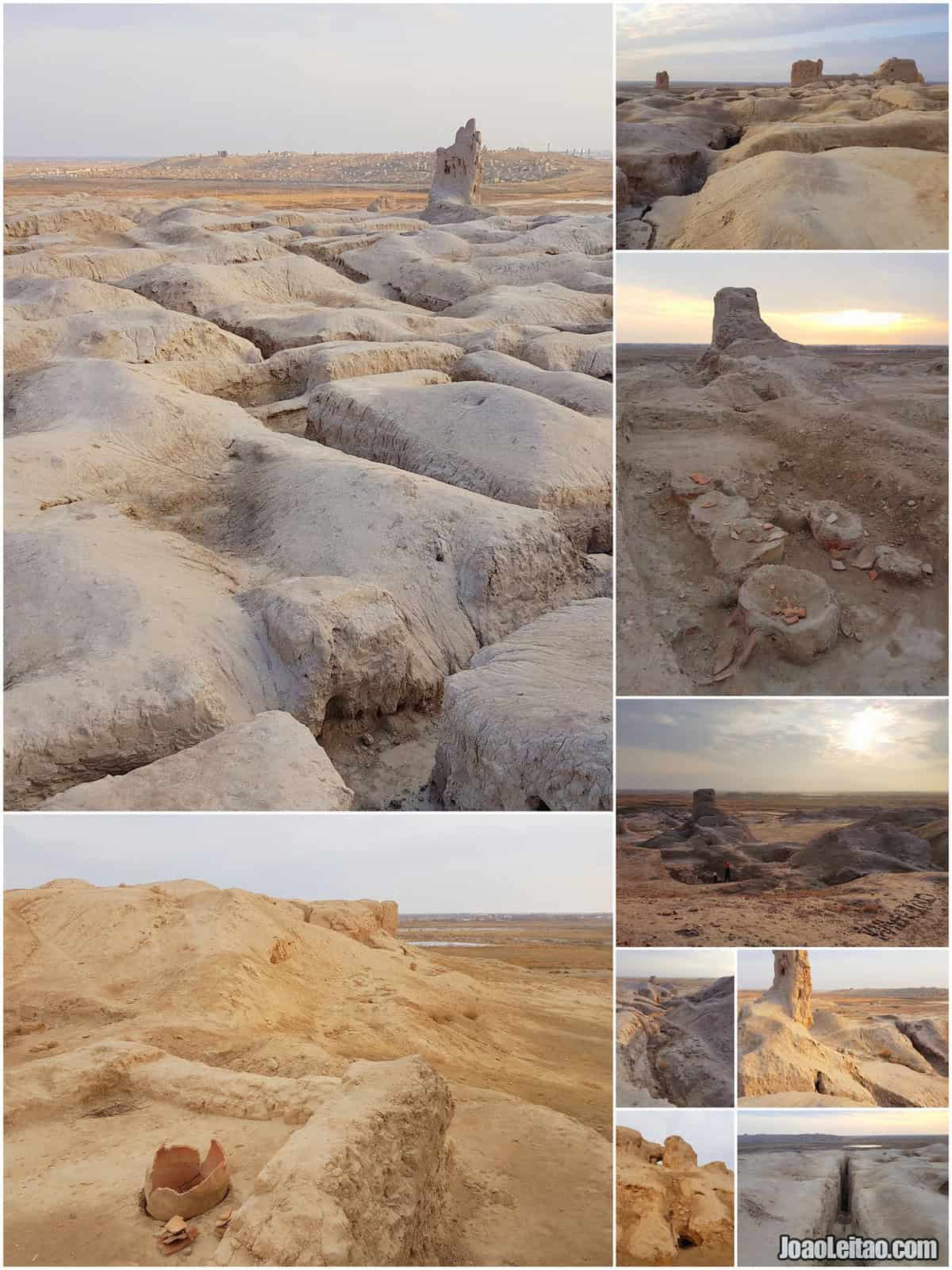
Gyaur Kala is located near the Turkmenistan border. This impressive castle provides incredible views over the Turkmen border, and inside you can notice several rooms and arches. I spent the night at Gyaur Kala, which is just 1 km away from Mizdahkan necropolis.
12- Mizdahkan necropolis
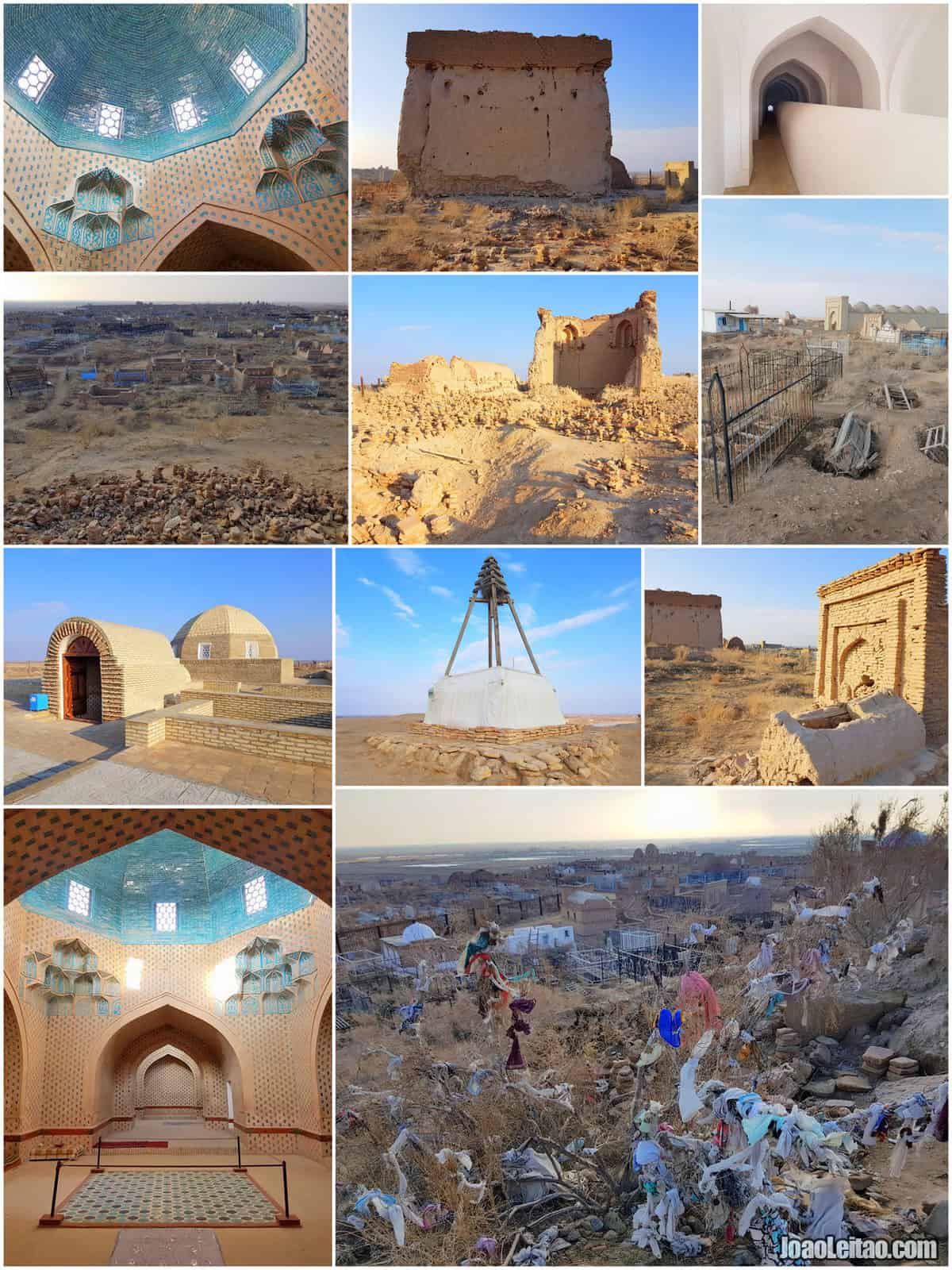
Mizdahkan is an impressive cemetery containing several ancient tombs and religious structures. Some of the tombs date from 2nd-century BC. This is a fascinating cemetery because we have 2000 years of graves all mixed up and side by side. You can go inside from the main gate, and explore the site. Don’t forget to visit the fantastic Underground Mausoleum of Mazlum Sulu Khan. One of the strangest places of the whole complex is the ruined madrassa with hundreds of small piles of rocks inside.
What to see in Mizdahkan:
- 2nd-century BC tombs
- 5th-century AC Zoroastrian necropolis
- 7th-century AC Tombs with Syrian-styled Christian crosses
- 9th-century Muslim tombs
- 9th-century Caliph Erezhep Mausoleum
- 12th-century Mazlum Sulu Khan Underground Mausoleum
- Djumarat Khassab Mound
- Muslim madrassa
- 25 meters long Mazar of Shamun Nabi
- Ruins of the ancient city of Mizdahkan west of the necropolis
13- Muynak
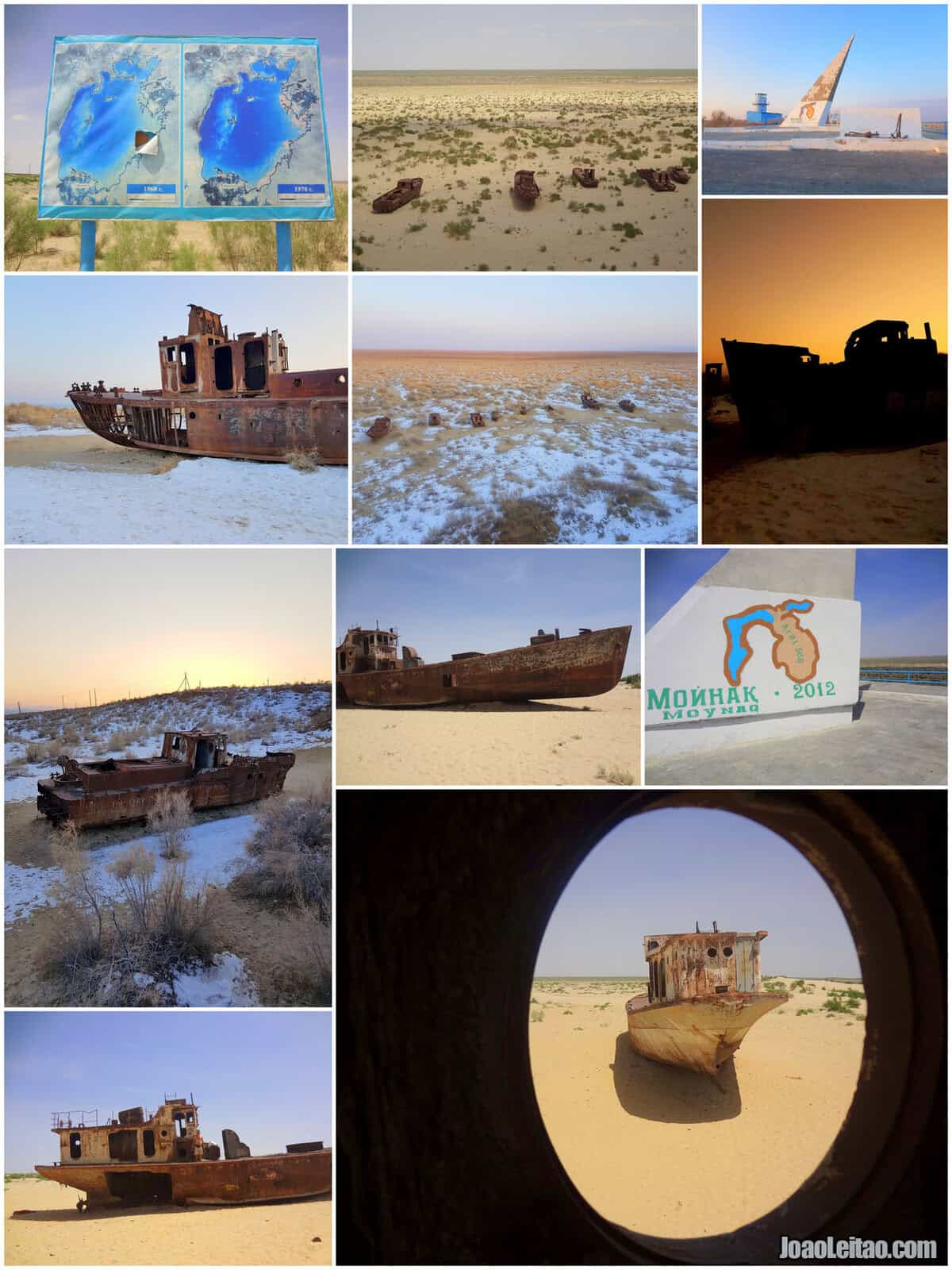
Muynak is one of those places that you have to visit once in a lifetime. Why? Well, it represents the history and holds the monument of one of the biggest ecological disasters of human history. The Aral Sea was once the fourth largest lake in the world, with 24 species of fish and surrounded by fishing villages. While the lake was salt water, the rivers that run into it were fresh water. In the 1950’s the Soviet Union began using the streams to irrigate the neighboring cotton fields. After 60 years, the water drained up from most of the Uzbek part of the Aral. A new desert was created, the Aral Kum – Aral Desert. I visited Muynak in the summer and in the winter.
What to see in Muynak:
- Aral Sea Monument
- The Regional History and Aral Sea Museum
- Boats cemetery number 1 near Aral Sea Monument
- Boats cemetery number 2
Read my page:

